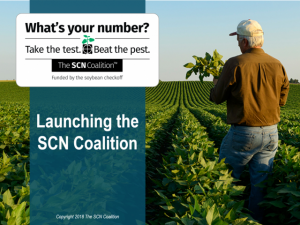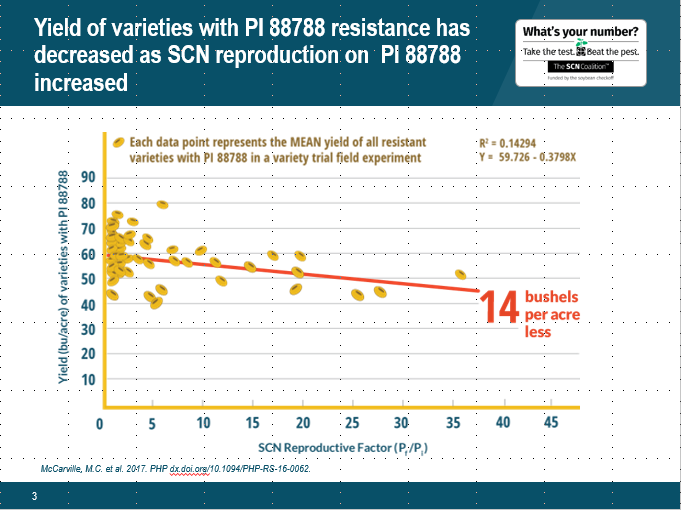April 4, 2018

Source: Ohio State University
By Anne Dorrance, Terry Niblack
Over the course of the next year, you will hear much about the pest, soybean cyst nematode. No stranger to Ohio, since the 1980’s, farmers in Ohio have been monitoring this pest. The first surveys, early 1990’s, SCN occurred sporadically in the state but some populations were very high. In a survey of fields in southern Ohio, high populations of SCN were found in fields where yields were consistently low.
One of the more recent check-off funded projects, identified that more fields than 20 years ago has SCN. Among the 143 fields sampled at a depth of 6 to 8 inches in 51 counties in Ohio, SCN was detected in 81% of the fields. The good news is that only 6 of the 147 were above the yield damaging levels.

However, it should be noted, that SCN is highly aggregated in most fields due the nature of how it feeds only the roots and its movement is limited to soil or underground.
In addition to more fields planted more frequently to its favorite host, soybean cyst nematode, there are other potential reasons for this increase. SCN has been managed very well for the last 20 years by the deployment of soybean varieties with the PI 88788 source of resistance.
However, in Ohio as well as many areas of the Midwest, certain fields have populations that are adapting to this resistance. This resistance is a “slow shift” where the SCN reproduction on the resistant line is greater than 10% compared to a susceptible control cultivar. In fungi, where resistance has developed towards some fungicide this measurement would be 100%, one mutation and the fungus is good to go. In SCN there are several loci and as we now know many copies of the genes, so it is taking longer to adapt but also it is a slow shift where the SCN reproduction of some populations in Ohio and other areas of the Midwest are in the 15, 20, and 30%.
Ultimately this means that the resistance can still be used. But for how long, and what fields are we expecting yield loss even with varieties developed from the PI 88788 source of resistance.

This is where the new launch of the SCN coalition comes in. Some changes over the past – we don’t care when you sample (spring, summer or fall) – just sample. Admittedly, numbers are highest in the fall following the soybean crop and before any tillage when the cysts that developed are in the old roots. But to get to know where you field is in the system, just sample. Since the snow today (April 2) and cool soil temperatures are predicted to delay planting, begin to think about those low yield spots. These might be areas of your farms or customers farms where a SCN populations maybe very high.
An opportunity to sample these low yielding spots in the state is in development. So begin to assess where those might be on your farms. Unless it is a spot that floods out every year, SCN could be robbing you of yield – year after year. So if you could, which field and which 5 acres spot in that field would you sample first?
There is a lot of information already out and more in development. The new website, www.TheSCNcoalition.com is now accessible with training and infographics, you can bookmark this for your planting time – while on autosteer. Only on autosteer. Our Ohio site, with updated information is also ready https://u.osu.edu/ohscn/. Take your time to see where this pest has been detected, where some of the hot spots are and what we need to be aware of for management. This pest can not be eradicated or removed from a field once it is there, but there is no reason why it should take a lot of our soybean yield, we just need to manage it and that starts with knowing your number.
Check out more coverage of SCN in CSD here:
- Stop soybean profit loss to SCN
- Soil testing this fall? Split your sample and test for soybean cyst nematodes
You May Also Like




